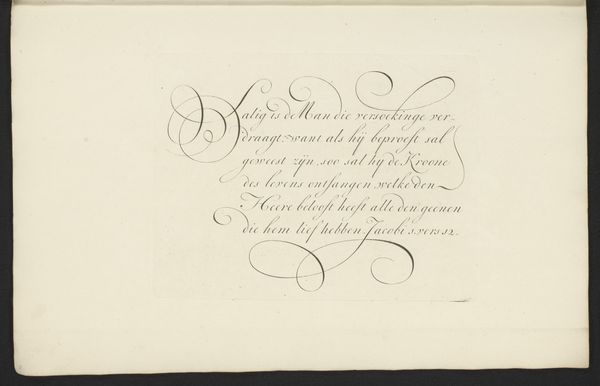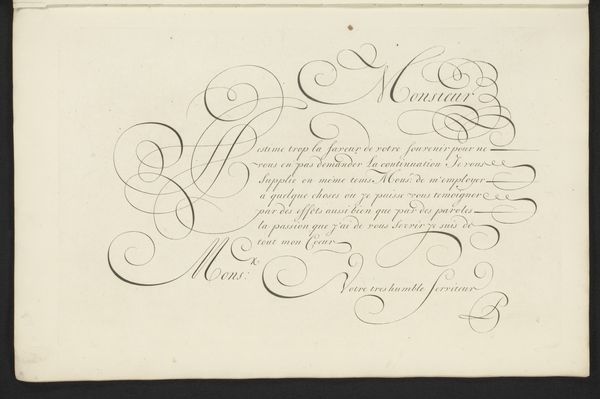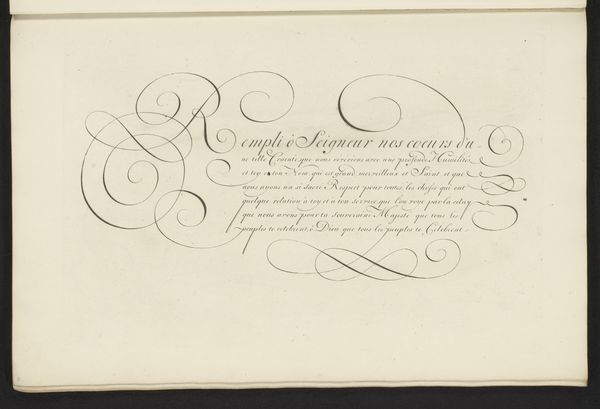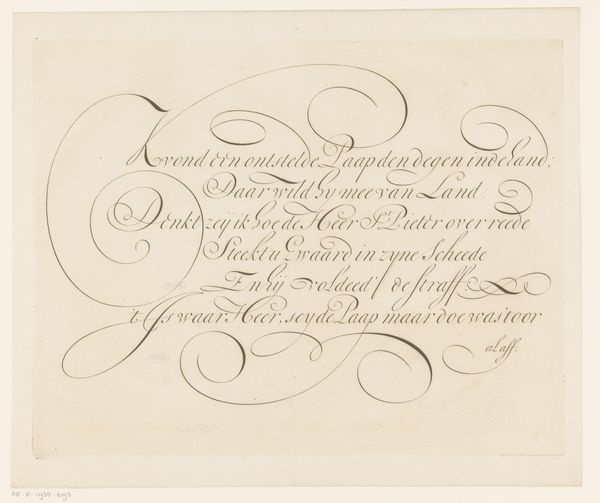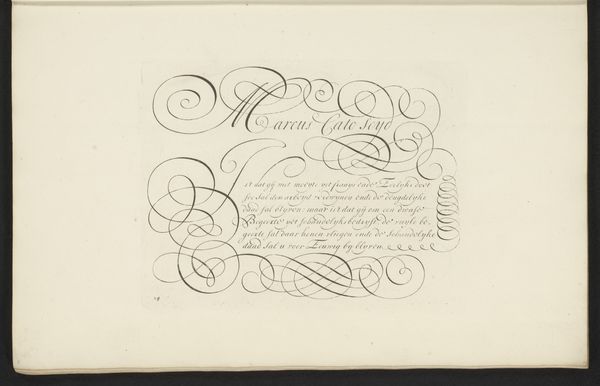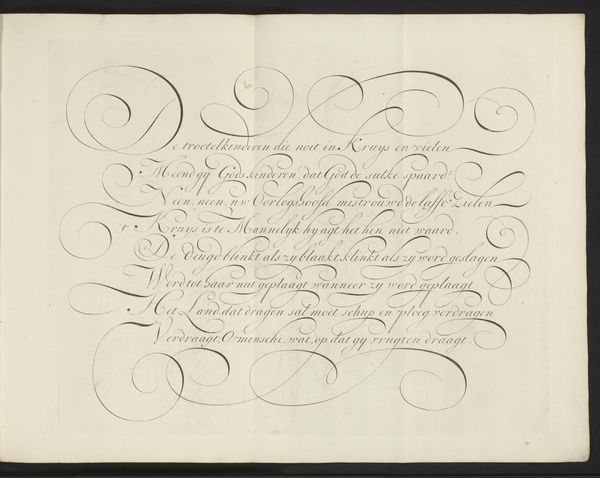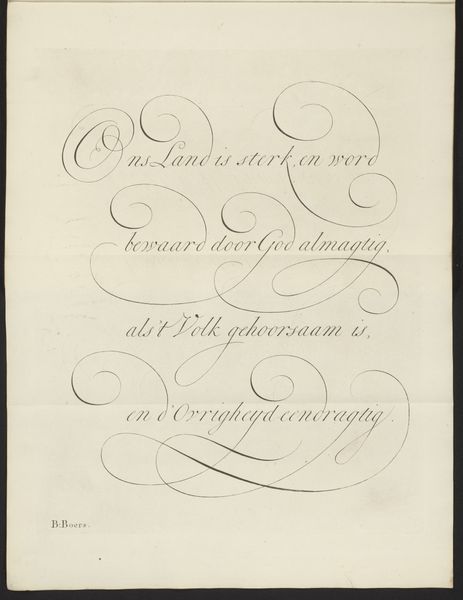
drawing, print, paper, ink, pen
#
drawing
#
script typography
#
hand-lettering
# print
#
old engraving style
#
hand drawn type
#
hand lettering
#
paper
#
personal sketchbook
#
ink
#
hand-drawn typeface
#
pen-ink sketch
#
pen work
#
sketchbook drawing
#
pen
#
calligraphy
Dimensions: height 165 mm, width 210 mm
Copyright: Rijks Museum: Open Domain
Curator: Right, let’s take a moment to observe this drawing. It's entitled "Schrijfvoorbeeld: De vroome sullen de aarde…", or "Writing Sample: The meek shall inherit the earth…" dating from between 1660 and 1751. We see delicate script work, primarily done in ink on paper. Editor: It strikes me immediately as something so serene. The color, the elegant script - it whispers secrets from another time. Almost ghostly with it's aged feel, don't you think? Curator: I agree. There’s a deliberate quality about it, even with the apparent ease of the strokes. The looped flourishes remind me how valuable legible, ornamental handwriting was in that era – it was a social grace and marketable skill all in one. Think of the level of training, the cost of the materials like ink and quality paper! Not everyone had that access. Editor: It feels very devotional. The patience, the almost meditative quality of repeatedly forming these letters... Were these "writing samples" practice or works in themselves, a way to make money by selling attractive renditions of wise sayings? Curator: Good question! They served both purposes, I suspect. Calligraphy masters would create these to showcase their abilities, attracting students or commissions. And yes, the market for beautifully rendered text, especially of religious or moral content, would be significant, it would be prominently displayed within homes, and even given as a personal gift. This one may have originated from someone training to be a scribe or perhaps preparing to enter into service. Editor: That's what I mean! So, essentially this beautifully presented bit of text reveals complex elements around social status, education, commerce and maybe even religious convictions, all embedded within this single piece of paper. Curator: Precisely. It underscores the value placed on literacy and skillful handwork in conveying information and upholding social norms. Editor: It all goes back to access doesn't it? Fascinating, the lives encoded into these simple letters. Curator: It is indeed. It prompts us to think about the work and skills considered valuable, then and now, and who gets to participate in those economies.
Comments
No comments
Be the first to comment and join the conversation on the ultimate creative platform.


